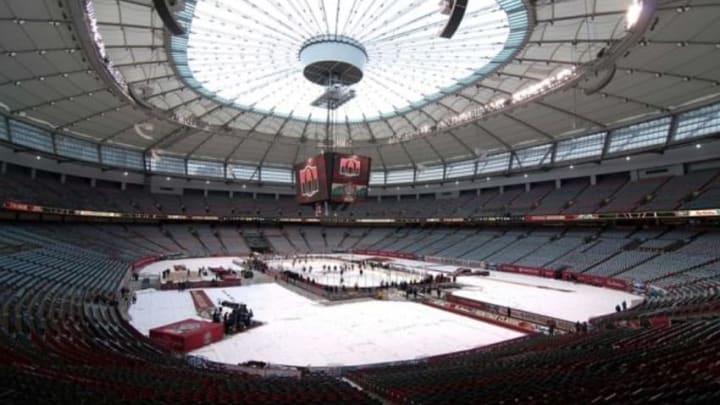CHL players looking to form union
By Cory Buck

The CHL is the foremost junior hockey league not just in Canada but in the world. It houses the OHL, the WHL and the QMJHL — otherwise known as the leagues that provide most of the top NHL draft prospects on an annual basis. Players on the average junior team typically range in age from 16 to 18, which means players have to balance hockey and school. Now in an effort to make the money work, players are loosely discussing the possibility of forming a union — something that college football fans in the States would be wise to stay keen on.
More from NHL
- NHL Rumors: Legendary Patrice Bergeron retires, which 3 players could be next to hang up their skates?
- NHL Rumors: Latest on Hart, Hellebuyck, Gibson trade possibilities
- NHL Rumors: 5 forwards most likely to sign early extensions this summer
- NHL Rumors: Where things stand with Erik Karlsson, Penguins and Hurricanes
- NHL Rumors: Penguins nearly traded for Erik Karlsson at deadline
Ryan Kennedy of The Hockey News writes that the premise of a union was simple, its goals even simpler. “There was one common thread when I asked what the players would want from a union: More money.”
While the OHL had recently agreed to up its compensation package to include about $470 in monthly stipends, players argue that’s still not enough. Kennedy writes, “One player told me that the amount of gas it takes to drive to school and the rink every day eats up most of that. Then, he has to pay $300 for car insurance every month, plus any repairs to the vehicle. He ends up borrowing money from his parents, who already spent years paying AAA hockey fees so he could just get to major junior.”
Sound familiar, college fans? While corporations rake in millions upon millions of dollars on the back of amateur sports, they withhold basic amenities, using school as an excuse for withholding all but the bare minimum from the players who make the sport what it is. Now it appears at least some of these athletes are fighting back.
A union may be a just cause, but it’s a tricky issue for a league whose players cycle out every few years. It would be an unstable mess unless it was run by some seasoned permanent union boss, in which case the whole operation could be exposed to rampant corruption.
While plenty of players like the idea of the union, others can take it or leave it. At the end of the day, the biggest concern for players isn’t forming a union, it’s securing fair compensation for their time spent making everyone else oodles of cash. If the CHL can address that issue, then union talk will be a distant memory. Once again, the same can be said for college sports in the USA.